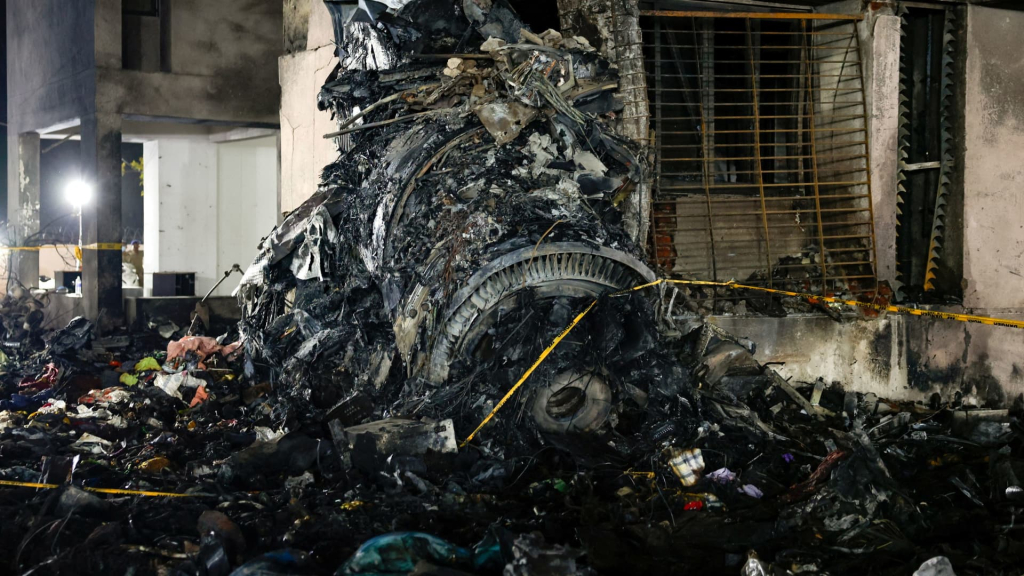An Air India flight, which was en route to London with 242 passengers onboard, tragically crashed just moments after taking off in western India on Thursday. The disaster involved a Boeing 787 Dreamliner and resulted in the death of all but one individual aboard the aircraft.
This incident marks the first recorded crash of a Boeing 787 Dreamliner and is one of the deadliest aviation disasters in recent history.
Here’s what is known so far:
What type of aircraft was involved?
The aircraft in question was a Boeing 787-8 Dreamliner, a well-regarded twin-aisle jet typically utilized for long-haul flights.
This specific plane commenced its service in December 2013 and was delivered to Air India in January 2014, as reported by aviation-data firm Cirium.
As of Thursday, Air India operated 34 Dreamliners, including the one involved in the incident, and had intentions to acquire at least 20 more. The airline has been expanding its fleet with newer models from both Boeing and its competitor Airbus while enhancing its cabin experiences.
Globally, there are over 1,100 Dreamliners in operation.
What transpired during the flight?
Preliminary reports indicate that the aircraft’s signal was lost at 1:38 p.m. local time, just under a minute after it departed from Ahmedabad’s Sardar Vallabhbhai Patel International Airport, according to information from flight-tracking service Flightradar24.
The flight was able to reach a height of 625 feet, while the airport itself is situated at approximately 200 feet above sea level. The reasons behind the rapid loss of altitude before the plane crashed into a fireball in a nearby residential area remain unclear. Local media reports also indicate additional fatalities on the ground due to the incident.
Air crashes can occur due to a multitude of factors, including mechanical failure, wildlife interference, or pilot error, and usually involve a combination of issues.
What will investigators examine?
Investigators will meticulously search through the debris for the black boxes, which include the cockpit and flight-data recorders. These essential devices will provide important insights into the events leading up to the crash.
Crash investigators will analyze a wide array of factors, from the airline’s maintenance logs to the pilots’ actions, the aircraft’s position, and the deployment of slats and flaps, along with the pilots’ training and rest periods, as well as the weather conditions on the sweltering day when temperatures neared 100 degrees Fahrenheit.
Video recordings related to the incident, particularly of the aircraft during its takeoff from Ahmedabad, will also be scrutinized. Following international protocols, the country where the accident occurred will spearhead the investigation, with Boeing, the aircraft’s engine manufacturer GE Aerospace, and U.S. federal crash investigators participating.
Have there been past manufacturing concerns about Dreamliners?
While a definitive cause for the crash may not be available until next year, some experts are hesitant to attribute the incident to manufacturing defects, citing the plane’s operational history spanning over a decade.
Jeff Guzzetti, a retired safety investigator associated with the U.S. National Transportation Safety Board and the Federal Aviation Administration, stated, “I don’t believe this is a problem stemming from manufacturing or production.” He noted the complexities involved in air crashes, which often result from multiple failures.
He mentioned that the flight appeared to have taken off without issue but was, for an unknown reason, unable to gain altitude. Although Boeing has encountered difficulties with the Dreamliner in the past, experts did not find an immediate correlation between past issues and this crash.
A whistleblower had claimed last year that Boeing took shortcuts in the production of the 787, creating significant stress on major joints of the aircraft, which the company has since denied. Additionally, deliveries of the Dreamliner were halted for nearly a year until mid-2022 due to structural flaws in the fuselage.
Furthermore, after the Dreamliner’s debut in 2011, the fleet faced grounding to inspect concerns regarding potential lithium battery fires.
What implications does this hold for Boeing?
Boeing’s CEO, Kelly Ortberg, who assumed the position in August, has been striving to steer the company, a leading U.S. exporter, away from previous safety and manufacturing controversies.
This incident follows a tumultuous period for Boeing, which was already facing challenges from two crashes involving its popular 737 Max jets, along with a recent incident in 2024 where a door plug malfunctioned on a new Max 9 model.
The ramifications for Boeing will largely depend on the outcomes of the crash investigation. Despite the challenges, the demand for new airplanes remains strong, with airlines often placing orders that take years to fulfill.
According to Wolfe Research’s analysis, “we don’t anticipate a significant impact on financial performance, but this is likely to dampen momentum until further clarity is achieved.” They added that they expect only a minor, localized effect on demand and believe that while there may be slight risks regarding the certification of the new 777X model, it is premature to gauge the full extent of that risk.
Boeing’s current order book still includes around 900 additional Dreamliners, as per company records.


























